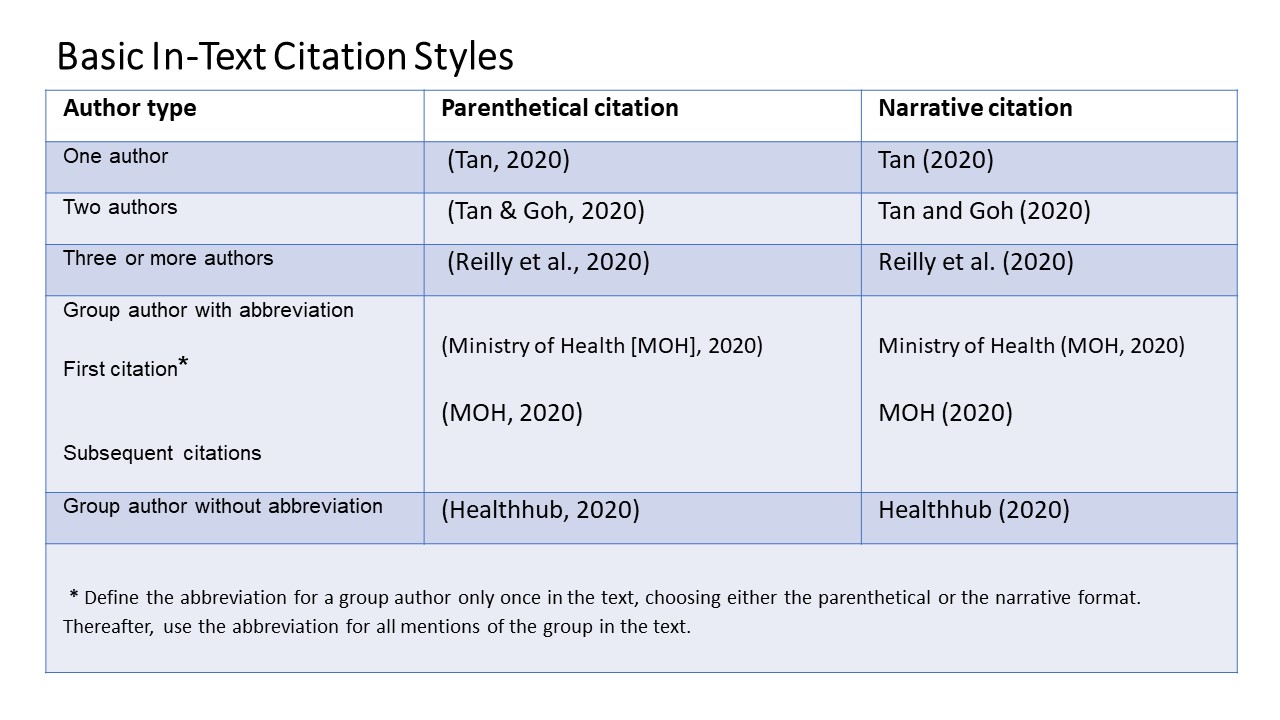
Number of Authors to Include in In-Text Citations
Note the change in format in the author element depending on the number of authors (see table below for examples of the basic in-text citation styles.)

For in-text citation: include the title and year of publication
If the title of the work is italicised in the reference, the title in the in-text citation should be in italics as well. If the title of the work is not italicised in the reference, use double quotation marks around the title in the in-text citation.
If an author is specifically listed as anonymous, "Anonymous" takes the place of the author name in the in-text citation, followed by a comma and the date.
To cite a specific part of a work, indicate details of the page, chapter, figure, etc. Always give page numbers for direct quotations.
Note: "Page" is abbreviated but not "Chapter".

Multiple works with three or more authors and the same publication year may cause some confusion when we apply the APA guideline for in-text citation.
If the in-text citation of multiple works shorten to the same form, enter as many names needed to distinguish the references. and abbreviate the rest of the names to "et al." in every citation.
For example, two works have the following authors:
Tan, Goh and Kumar (2020)
Tan, Goh, Kumar, Reilly and Jaecklin (2020)
Both these citations shorten to Tan et al. (2020). To distinguish these when citing them both in your paper, cite them as follows:
Tan, Goh, Kumar, et al. (2020)
Tan, Goh, Kumar, Reilly et al. (2017)
The author-date method of citation requires that the last name of the author and the year of publication be inserted in the text at the appropriate point:
If the name of the author appears as part of the write-up, as in the first example, cite only the year of publication in parentheses, Otherwise, place both the name and the year, separated by a comma, in parentheses (as in the second example).
In rare cases, both the year and the author are given as part of the write-up. In this case, you can leave out the parentheses.
In the Reference List (include Secondary Source):
Multiple Works
Two or more works by same authors: arrange by year of publication
In-press citations will be listed last. Give the author's last name once and for each subsequent work, give only the date.